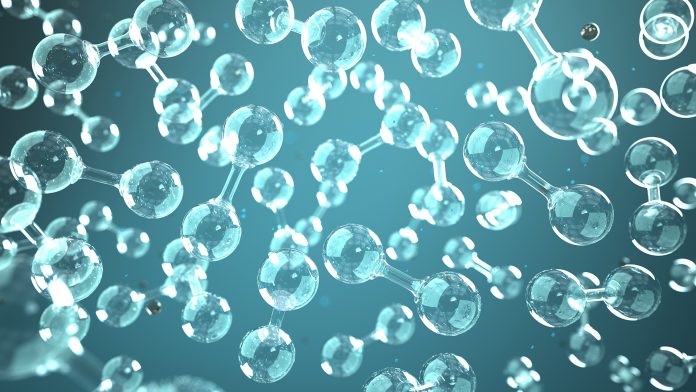Triton Hydrogen has unveiled its game-changing Tritonex Hydrogen Barrier Coating System – a solution to the long-standing hydrogen containment challenge.
Certain quests redefine the frontiers of possibility in the landscape of scientific discovery. Such is the story of Triton Hydrogen, a saga of innovation and the relentless pursuit of a solution to a 100-year-old problem. The story begins with visionary Henning Syversen, the CEO of the R&D company Triton Norway. Syversen and his team embarked on an ambitious mission: to contain the most elusive molecule in the Universe – hydrogen.
Hydrogen, despite its promise as a clean energy source, has long been a slippery challenge. Its tiny molecular size allows it to escape even the tightest of confines, including permeating through solid steel. A group of talented scientists at Triton Norway took on the momentous challenge, combining nanotechnology, electrochemistry, and material science to contain hydrogen and help unlock its vast potential for our planet.
Many other organisations, including scientists at world-renowned institutes, had tried and failed to create a hydrogen barrier and spent billions. Until now, nobody has succeeded in creating a 100% impermeable barrier that does not react to hydrogen.
Grappling with hydrogen and solving the problem
Triton’s journey took on an epic narrative in a world grappling with environmental challenges. Like alchemists of the modern age, Syversen’s team harnessed the enigmatic secrets of nano-sequencing and electro-osmosis. Their pursuit was not without trials and tribulations. Each failure was a teacher, each setback a catalyst for greater resolve. Against the odds, they developed the Tritonex Hydrogen Barrier Coating System (HBCS) – a nano-engineered marvel that heralds a new era of energy efficiency and environmental stewardship.
Tritonex’s genesis marked the birth of Triton Hydrogen Ltd in the UK, a testament to the team’s visionary approach and commercial acumen. Tritonex wasn’t merely a scientific breakthrough but a green revolution in disguise. Tritonex HBCS may seem like an ordinary paint product which can be easily applied using all of the traditional methods from brush to spray gun, but its water-based composition holds the secret nano-ingredient.
Tritonex has other properties too. It is electrically inert and does not react to any chemicals, which means it stops corrosion entirely – another remarkable property. Tested to temperatures of over 1,000°C, Tritonex is designed to withstand extreme temperature variations, and it is remarkably flexible and able to follow the thermal expansion and contraction movements of pipes and storage vessels. It is non-toxic, ensuring safety in handling. Its smooth surface also provides flow assurance.
Its unique properties, including barrier efficiency, position it as an indispensable tool for the hydrogen infrastructure, storage, and transport sectors. It emerges as a universal solution, applicable across substrates from steel to composites, carbon fibre, plastic and even rock.
Every manufacturer across the hydrogen value chain and every sector will benefit. Wherever hydrogen is involved, you need a hydrogen barrier containment solution; you need Tritonex.
The real magic of Tritonex lies in its versatility. It can be applied manually and robotically, making it a boon for original equipment manufacturers (OEM) and field retrofitting. Tritonex has shown zero hydrogen permeation in rigorous tests, attaining its ISO 17081:2014 certification – the only barrier coating to hold this ISO – a feat that cements its place as a leader in containment technology.

Applications and impact of hydrogen barrier coating
Tritonex’s applications are as diverse as they are impactful: From hydrogen storage to pipelines, electrolysis plants, shipping, and infrastructure. It’s a guardian angel in aerospace, enabling lightweight materials to construct fuel tanks and systems. For the transportation industry, it boosts safety and efficiency for vehicles using or transporting hydrogen fuel.
The coating’s impact on the environment could be profound, preventing hydrogen leaks and curtailing the indirect global warming effects caused by escaped hydrogen molecules. Hydrogen molecules can extend the lifetime of other greenhouse gases, such as methane, increasing atmospheric warming.
A report by Ocko and Hamburg (2022) suggests that over ten years, the warming impact of leaked hydrogen could be approximately 100 times stronger than that of carbon dioxide, highlighting the urgency of addressing this issue. This makes Tritonex not just a technological marvel but also an environmental saviour.
Tritonex’s economic implications are equally significant. Enhancing the efficiency and lifespan of infrastructure paves the way for cost savings and reduced carbon emissions. Its retrofitting capabilities in gas pipelines and storage tanks make it a valuable asset in the energy sector.
Additionally, its role in fuel cells, particularly high-temperature solid oxide fuel cells (SOFCs), could be revolutionary. Tritonex potentially enhances the efficiency and longevity of these cells, heralding a new dawn in fuel cell technology.
What does the future hold for Triton?
As Triton Hydrogen strides into the future, its legacy will continue to grow. From a visionary idea, it will blossom into a symbol of industrial innovation and environmental responsibility. The story of Triton Hydrogen is a beacon of hope, a narrative of overcoming insurmountable challenges to pave the way for a brighter, cleaner future.
In conclusion, Triton Hydrogen’s journey, spearheaded by the indomitable spirit of Henning Syversen and his team, is a testament to human ingenuity and perseverance. It’s a story that intertwines the threads of scientific brilliance, commercial success, and ecological consciousness.
With Tritonex HBCS, Triton Hydrogen is not just changing the game; it’s rewriting the rules, one atom at a time. This journey is more than a chapter in corporate history; it’s a blueprint for a sustainable future, a narrative that resonates with the spirit of innovation and the relentless pursuit of excellence.
Please note, this article will also appear in the seventeenth edition of our quarterly publication.









